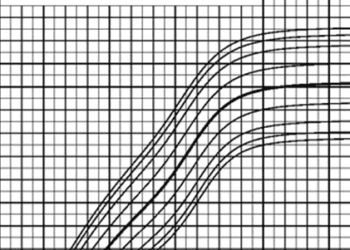Growth disorders detected using screening algorithms
Image: PD
1. Higher rates of primary and secondary growth disorders were detected in children by automated growth monitoring (AGM) integrated into electronic health records.
2. Referral rates to specialists for suspected growth disorders also increased when automated growth monitoring was used.
Evidence Rating Level: 2 (Good)
Study Rundown: Measurement of linear growth in pediatrics facilitates early diagnosis and treatment of growth disorders. However, despite frequent routine monitoring, there are still delays in diagnosis. This study in Finland compared the early detection and diagnostic yield of growth disorders in a primary care pediatric setting from automated growth monitoring (AGM) in an electronic health record (EHR) system to standard growth monitoring (SGM). More children were referred to specialists for a suspected growth disorders from AGM (0.64%) compared to SGM (0.22%). Of those referred, more children monitored by AGM were found to have primary or secondary growth disorders (13.4%) compared to SGM (5.9%). Furthermore, 50% of children identified with growth disorders in the AGM group had earlier abnormal height measurements, with a delay in diagnosis of 1.79 years. Strengths of the study include utilization of a large population for the cohort study. The study is limited by unknown generalizability to other countries where large populations of children are not enrolled in growth monitoring programs.
Click to read the study, published today in JAMA
Relevant Reading: Growth monitoring for short stature: update of a systematic review and economic model
In-Depth [prospective cohort study]: This study analyzed 33,029 subjects by standard growth monitoring (SGM) between 2005-2008, and 32,404 subjects by automated growth monitoring (AGM) between 2008-2009. Of the 0.64% (95% CI, 0.56%-0.74%) of children identified by AGM to refer to specialists for suspected growth disorders, 13.4% (95% CI, 9.4%-18.7%) had primary or secondary growth disorders, 77.4% had no growth disorder or idiopathic short stature, and 9.1% had idiopathic short stature. In comparison, of the 0.22% (95% CI, 0.18%-0.28%) of children identified by SGM to refer to specialists, 5.9% (95% CI, 2.4%-13.9%) had primary or secondary growth disorders, 88.6% had no growth disorder or idiopathic short stature, and 5.5% had idiopathic short stature. In addition to yielding a wider variety of diagnoses, 50% of children with growth disorders analyzed by AGM had abnormal height measurements prior to AGM intervention, with a median delay in diagnosis of a growth disorder by 1.79 years (range, 0.08-10.26 years).
By Gayatri Boddupalli and Brittany Hasty
More from this author: Racial differences in breast cancer survival remain large, unchanged, Early surgical intervention for mitral regurgitation associated with greater long-term survival, Sofosbuvir, ribavirin achieve high rates of Hepatitis C virus remission in toughest cases
© 2013 2minutemedicine.com. All rights reserved. No works may be reproduced without expressed written consent from 2minutemedicine.com. Disclaimer: We present factual information directly from peer reviewed medical journals. No post should be construed as medical advice and is not intended as such by the authors, editors, staff or by 2minutemedicine.com. PLEASE SEE A HEALTHCARE PROVIDER IN YOUR AREA IF YOU SEEK MEDICAL ADVICE OF ANY SORT.







